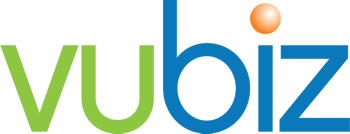 |
Written by Liz McDermott |
Traditional eLearning courses are often lengthy and text-heavy, presenting challenges for learners and organizations. They can be difficult to navigate, making it time-consuming for learners to find specific information when needed. This is especially problematic in fast-paced fields like sales, product training, and compliance, where readily available, up-to-date knowledge is essential for success.
Additionally, updating long courses can be cumbersome and time-consuming, hindering the ability to quickly adapt and roll out new training materials.
This article discusses the benefits of microlearning and how it can help you decide what best suits your organization's needs.

The Power of Microlearning
Microlearning, also known as bite-sized learning, offers a solution to the challenges of traditional elearning. Microlearning provides learners a "quick access route" to essential knowledge by breaking down content into short, focused modules.
Key Benefits of Microlearning
Mobile Accessibility: With the increasing use of smartphones and tablets for learning, microlearning's mobile-friendly format is a significant advantage. Long courses are often difficult to view and navigate on smaller screens, leading to a poor user experience. Microlearning modules, typically 3-5 minutes long, are designed to be easily viewed and interacted with on mobile devices. This allows learners to access training materials anytime, anywhere, fitting learning into their busy schedules.
Just-in-Time Learning: Microlearning aligns perfectly with the "moment-of-need" learning prevalent in today's workplace. Learners often turn to their mobile devices to find quick answers or solutions to problems they encounter on the job. Microlearning modules provide targeted, specific information that addresses these immediate needs, allowing learners to find the information they need quickly and efficiently.
Engaging Multimedia Formats: Microlearning leverages a variety of multimedia formats to create engaging and interactive learning experiences. These formats can include videos, animations, interactive quizzes, infographics, and more. Using a mix of media, microlearning can cater to different learning styles and preferences, making the learning experience more enjoyable and effective.
Efficient Development and Updates: Microlearning modules' shorter format makes them faster and more cost-effective to develop than traditional eLearning courses. This allows organizations to create and update training materials more rapidly, ensuring content remains relevant and up-to-date. Additionally, the modular nature of microlearning allows for incremental development and updates, making it easier to add new content or revise existing materials as needed.
Finding the Right Balance
The ideal length of a learning module depends on the specific learning objective. However, it's important to remember that attention spans are limited, and lengthy content can lead to disengagement. Microlearning focuses on delivering "need-to-know" information concisely, allowing employees to quickly acquire the knowledge and skills they need to improve their performance.
Conclusion
Microlearning offers a flexible and adaptable approach to learning that meets the needs of today's learners and organizations. By providing targeted, accessible, and engaging content, microlearning can improve knowledge retention, enhance job performance, and support continuous learning and development.
Consider Vubiz's custom development services for your product training needs. Our experienced instructional design team can help you transition to an online training format to help your business grow. Request a demo to learn more.
